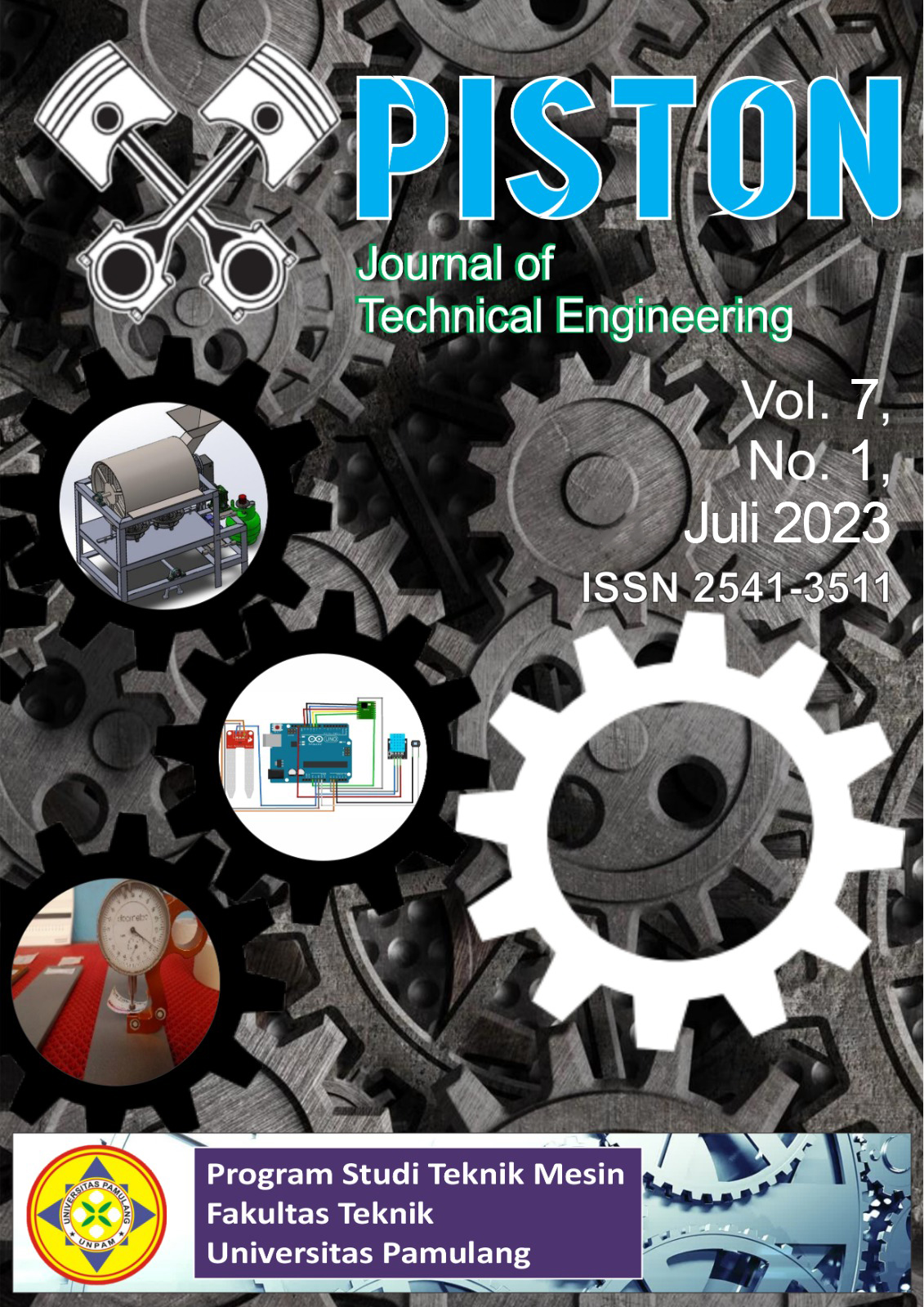Analisis Kualitas Udara Goa Seribu Banuarea
DOI:
https://doi.org/10.32493/pjte.v7i1.30159Keywords:
PM10, PM2, 5, Karbondioksida, Karbonmonoksida, GuaAbstract
One of the technological advances that are starting to be applied in various fields is data transmission. Data transmission sends messages from one point to another to get or exchange information. To perform the data transmission, technology and tools are needed which can support the process. The technology that supports the data transmission system is the Wireless Sensor Network. The tool that supports the data transmission is LoRa. LoRa is a module that is able to support data transmission systems with a fairly long distance range. In this study, LoRa testing was carried out using several distances, namely 100 meters, 200 meters, 300 meters, 400 meters to get the RSSI and SNR values. The purpose of determining the RSSI and SNR is to find out how LoRa's performance is in sending data in the agricultural sector. The tests carried out are still in agricultural areas which are still in the category of many obstacles and a lot of noise. So that in the tests carried out LoRa can still be used to send data, it's just that the farther the transceiver is to the receiver, the more data will be lost. At a distance of 100 meters, 10 data are received. At a distance of 200 meters there are 9 data, at a distance of 300 meters there are 7 data and at a distance of 400 meters 3 data are received.References
M. Cetin, H. Sevik, and A. Saat, “Indoor air quality: The samples of Safranbolu Bulak Mencilis cave,†Fresenius Environmental Bulletin, vol. 26, no. 10, pp. 5965–5970, 2017.
P. A. (Parana) Santi and E. (Emilya) Nurjani, “Analisis Kualitas Udara Stasiun Global Atmosphere Watch (Gaw) Bukit Kototabang Kabupaten Agam Sumatera Barat,†Jurnal Bumi Indonesia, vol. 1, no. 1, p. 238168, 2012.
E. E. Okonkwo, E. Afoma, and I. Martha, “International Journal of Research in Tourism and Hospitality (IJRTH) Page| 16 Cave Tourism and its Implications to Tourism Development in Nigeria: A Case Study of Agu-Owuru Cave in Ezeagu,†International Journal of Research in Tourism and Hospitality (IJRTH), vol. 3, pp. 16–24, 2017, doi: 10.20431/2455-0043.0303003.
H. A. Yanuarita, “Pembangunan Pariwisata Berkelanjutan: Studi tentang Pengembangan Wisata Gua Selomangleng di Kota Kediri,†Publik (Jurnal Ilmu Administrasi), vol. 7, no. 2, pp. 136–146, May 2019, doi: 10.31314/PJIA.7.2.136-146.2018.
M. Cao, Y. Jiang, J. Lei, Q. He, J. Fan, and Z. Zeng, “Constraining the soil carbon source to cave-air CO2: evidence from the high-time resolution monitoring soil CO2, cave-air CO2 and its δ 13 C in Xueyudong, Southwest Chinaâ€, doi: 10.5194/bg-2019-66.
L. Kukuljan, F. Gabrovšek, M. D. Covington, and V. E. Johnston, “CO2 dynamics and heterogeneity in a cave atmosphere: role of ventilation patterns and airflow pathways,†Theoretical and Applied Climatology, vol. 146, no. 1–2, pp. 91–109, Oct. 2021, doi: 10.1007/S00704-021-03722-W/FIGURES/12.
F. Plusquellic et al., “Atmospheric CO 2 Concentrations in Caves Protected as Nature Reserves and Related Gas Hazard,†2022, doi: 10.3390/atmos13111760.
F. A. Vargas, N. Y. Rojas, J. E. Pachon, and A. G. Russell, “PM10 characterization and source apportionment at two residential areas in Bogota,†Atmospheric Pollution Research, vol. 3, no. 1, pp. 72–80, Jan. 2012, doi: 10.5094/APR.2012.006.
I. Grgić, I. Iskra, B. PodkrajÅ¡ek, and V. D. GerjeviÄ, “Measurements of aerosol particles in the Å kocjan Caves, Slovenia,†Environmental Science and Pollution Research, vol. 21, no. 3, pp. 1915–1923, Feb. 2014, doi: 10.1007/S11356-013-2080-4.
“FINAL PROJECT-SB091358â€.
G. C. Fang et al., “The study of fine and coarse particles, and metallic elements for the daytime and night-time in a suburban area of central Taiwan, Taichung,†Chemosphere, vol. 41, no. 5, pp. 639–644, Sep. 2000, doi: 10.1016/S0045-6535(99)00507-X.
H. Kan et al., “Differentiating the effects of fine and coarse particles on daily mortality in Shanghai, China,†Environment international, vol. 33, no. 3, p. 376, 2007, doi: 10.1016/J.ENVINT.2006.12.001.
C. C. Lin, S. J. Chen, K. L. Huang, W. I. Hwang, G. P. Chang-Chien, and W. Y. Lin, “Characteristics of metals in nano/ultrafine/fine/coarse particles collected beside a heavily trafficked road,†Environmental science & technology, vol. 39, no. 21, pp. 8113–8122, Nov. 2005, doi: 10.1021/ES048182A.
A. Seaton et al., “Particulate air pollution and the blood,†Thorax, vol. 54, no. 11, pp. 1027–1032, 1999, doi: 10.1136/THX.54.11.1027.
H. Gunawan, Y. Ruslinda, V. Surtia Bachtiar, and A. Dwinta, “Model Hubungan Konsentrasi Particulate Matter 10 PM (Pm10) Di Udara Ambien Dengan Karakteristik Lalu Lintas Di Jaringan Jalan Primer Kota Padang,†Seminar Nasional Sains dan Teknologi, vol. 17, pp. 1–11, 2018.
B. Satya Hadi, “Diajukan Kepada Universitas Islam Indonesia untuk Memenuhi Persyaratan Memperoleh Derajat Sarjana (S1) Teknik Lingkunganâ€.
M. Kesehatan and R. Indonesia, “Peraturan Mentri Kesehatan Indonesia No 1077/Menkes/PER/2011,†2011.
Peraturan Pemerintah RI, “Peraturan Menteri Lingkungan Hidup dan Kehutanan Republik Indonesia No 14 Tahun 2020 tentang Indeks Standar Pencemaran Udara,†pp. 1–16, 2020.
T. H. Kim et al., “A Study on the Changes of Air Quality the Baekryong Cave in Pyeonchang (Natural Monument Number 260),†Journal of Korean Nature, vol. 5, no. 3, pp. 237–241, Sep. 2012, doi: 10.7229/JKN.2012.5.3.237.









